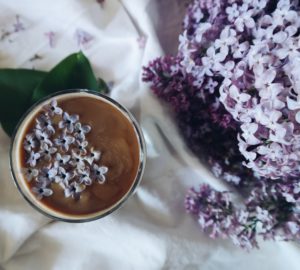5 easy ways to be more mindful of your palm oil use
Chances are your kitchen cabinets and bathroom shelves are loaded with palm oil. From soaps and face moisturizers, to bread and chocolates, palm oil can be found in all sorts of everyday products.
According to the World Wildlife Fund, palm oil is the most widely produced vegetable oil in the world. While it’s an efficient and affordable source of vegetable oil, it’s also connected to climate change, rainforest destruction, deaths of endangered species, and human conflict. Needless to say, it’s not something we want to be relying upon.
Rather than feel overwhelmed by the crazy amount of stuff with palm oil, here are some tips to be more mindful of your palm oil use and ways to cut down on your consumption.
How to reduce your palm oil use
1. Peep for “palm” on ingredient lists
Take a glimpse at ingredient lists for palm or palm oil. Yes, this may sound obvious but you might find it written on a surprising amount of things that you wouldn’t think have anything to do with palm oil. Some brands of instant noodles and shampoo even contain palm oil and palm oil derived ingredients.
2. Refresh your label lingo
You’d think a quick scan for “palm” or “palm oil” on an ingredient list would be enough. However, it’s not that simple. Lots of terms are used to indicate palm-derived ingredients, which don’t actually use the word “palm” (insert: eye roll).
Here’s a list of some of them:
- PKO – Palm Kernel Oil
- PHPKO – Partially hydrogenated Palm Oil
- FP(K)O – Fractionated Palm Oil
- OPKO – Organic Palm Kernel Oil
- Palmitate – Vitamin A or Asorbyl Palmitate
- Palmate
- Vegetable oil
- Glyceryl
- Stearic acid
- Sodium laureth sulfate
- Vegetable fat
- Sodium kernelate
3. Know your palm-free products
Support brands that are either palm-free or working to remove palm oil from products like Lush cosmetics, Divine Chocolate, Malk alternative milks, Deliciously Ella, Mooncup, and Tofurky. By gradually integrating palm-free brands into your routine you’ll cut back on your usage over time… slowly but surely.
4. Stay on the lookout for alternatives
Two Scottish entrepreneurs are currently working on a way to replace palm oil with the oil from used coffee grounds, which would be a huge win for Mother Earth. In the meantime, coconut oil, almond oil, and avocado oil are three other alternatives to look for.
5. Consider certified sustainable palm oil
It’s very difficult to completely eliminate palm oil from your life. But, not all palm oil is created equally – it’s possible to purchase products containing certified sustainable palm oil. Just look for the RSPO label.
RSPO (Roundtable on Sustainable Palm Oil) is a non-profit organization that has “developed a set of criteria which companies must comply with to produce Certified Sustainable Palm Oil.” They work with palm oil producers, processors and traders, consumer goods manufacturers, retailers, banks and investors, and environmental and social NGOs to develop and implement global standards for sustainable palm oil.
They actually have a shopping app that enables you to look up brands to find out if they’re certified. Depending on your device, you can download it from the Apple App store and Google Play.
Some companies go above and beyond RSPO certification and get other certifications – like organic, fair trade, and Rainforest Alliance. You can learn more about that on the Palm Done Right website.
That said, some argue that all palm-oil (RSPO or not) is connected to environmental damage. So, it’s important to do your research, purchase mindfully, and ask yourself what you’re comfortable supporting.
No matter what, animals and the planet will benefit from us reducing our palm oil consumption, so let’s all do our part!
Want to learn about more eco-friendly changes to make in your everyday life? Check out these posts!
- How to make your morning commute more eco-friendly
- Make these 11 swaps to be more eco-friendly
- Want an eco-friendly kitchen? Here’s how to make it happen
- 7 Easy ways to make your bathroom eco-friendly









